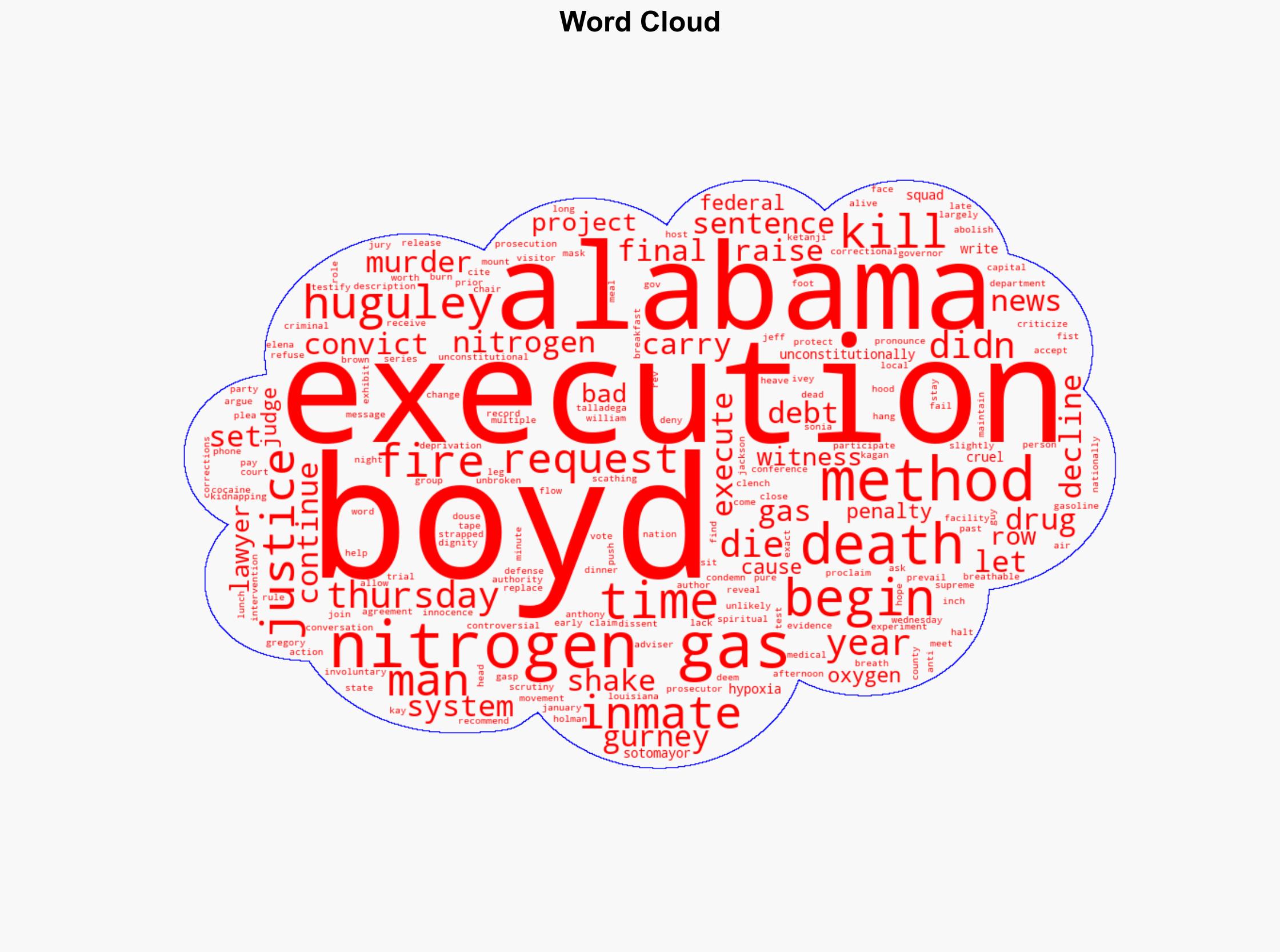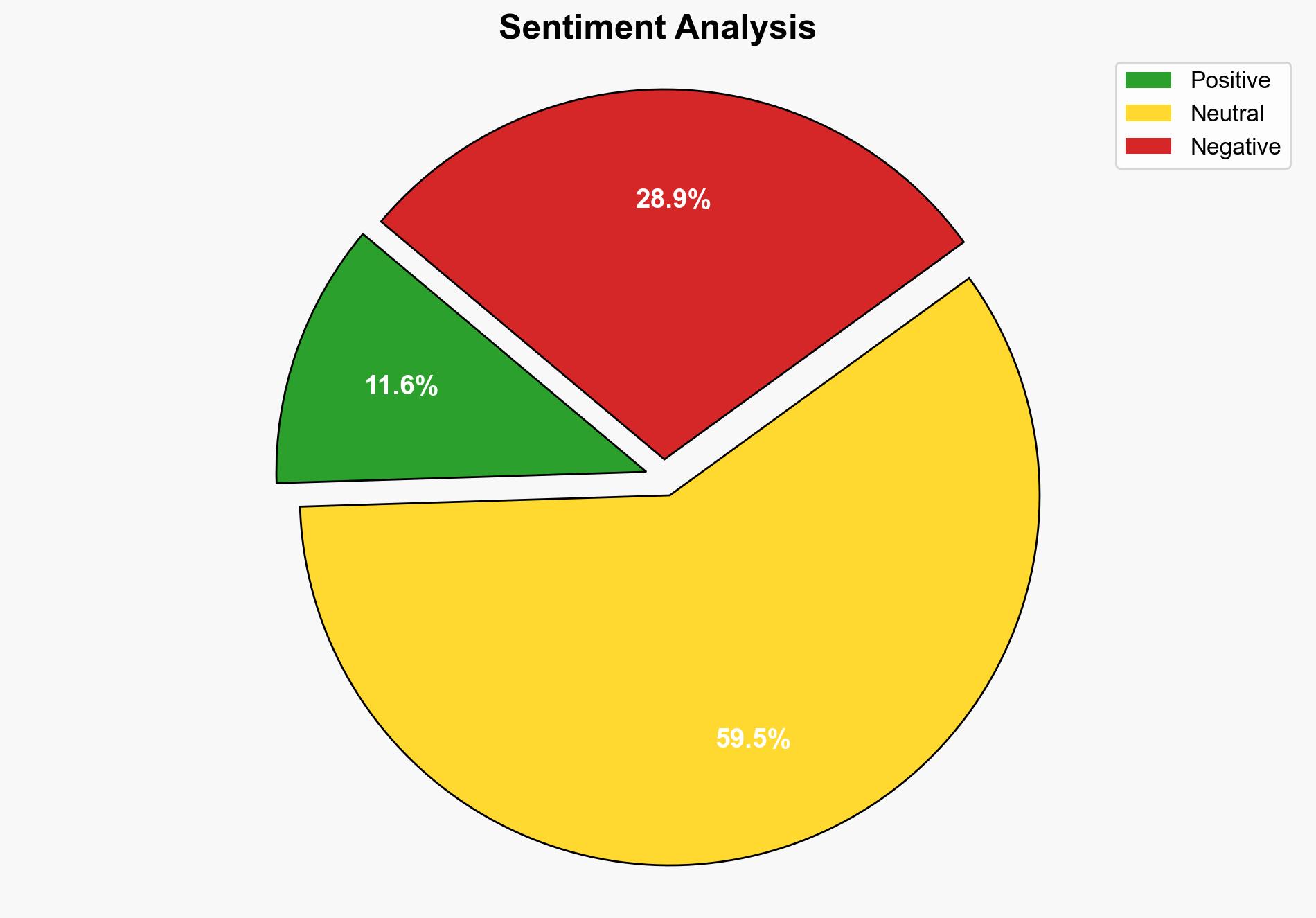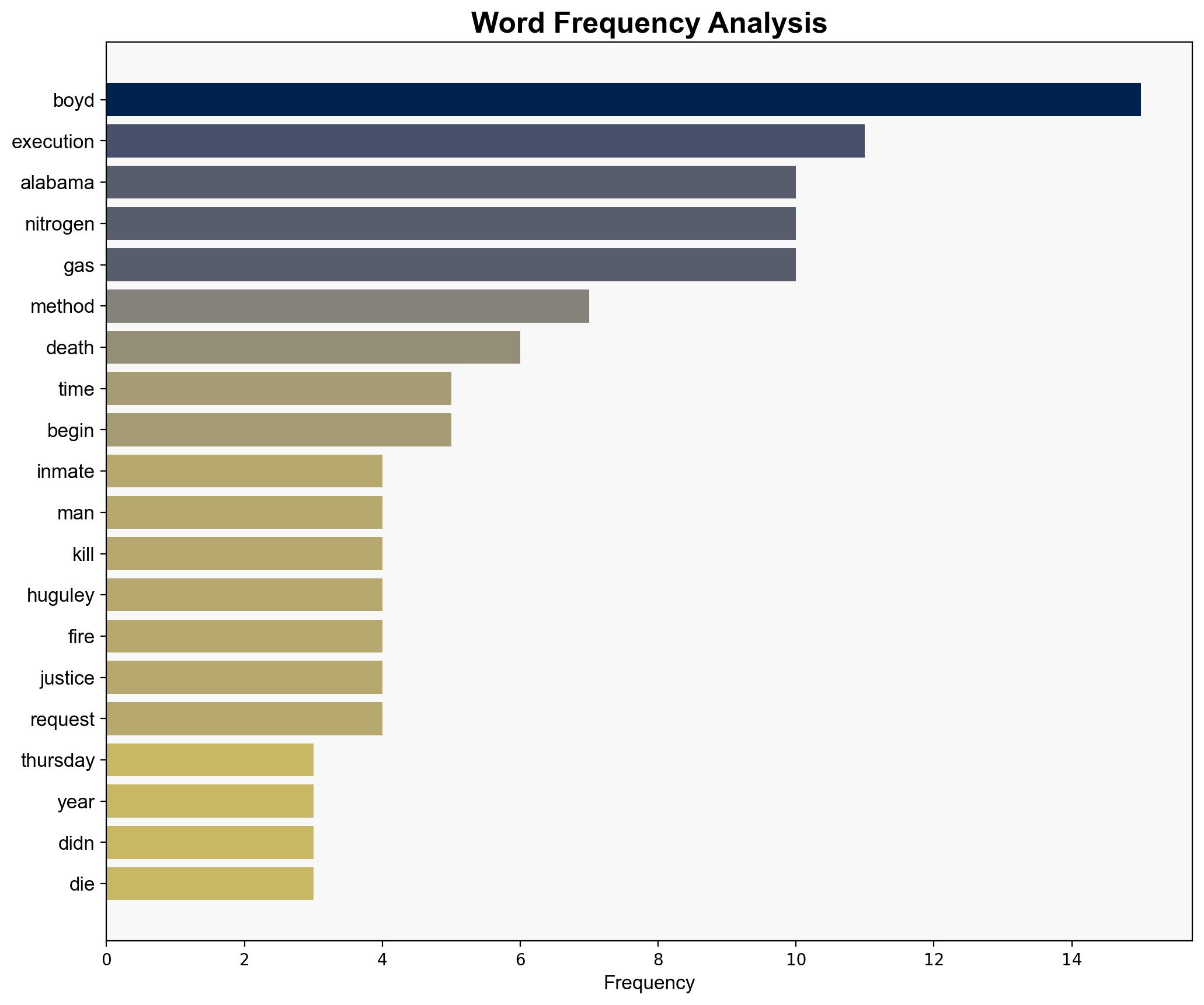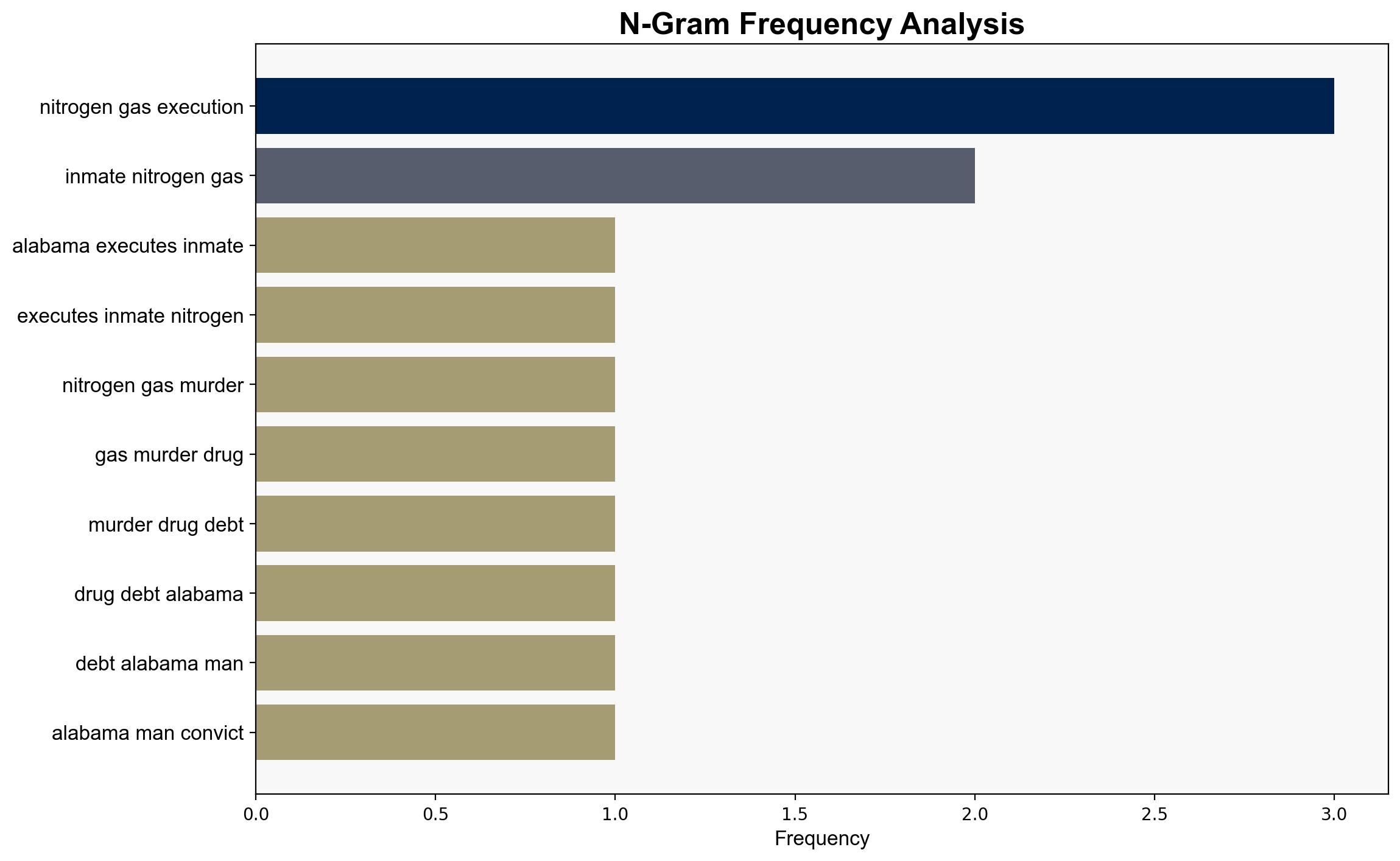Alabama executes man with nitrogen gas for 1993 murder over 200 drug debt – CBS News
Published on: 2025-10-24
Intelligence Report: Alabama executes man with nitrogen gas for 1993 murder over 200 drug debt – CBS News
1. BLUF (Bottom Line Up Front)
The execution of Anthony Boyd using nitrogen gas raises significant legal and ethical concerns, particularly regarding the method’s constitutionality and potential human rights violations. The most supported hypothesis suggests that the use of nitrogen gas is a controversial method that could face increased legal challenges and public scrutiny. Confidence level: Moderate. Recommended action: Monitor legal developments and public response to anticipate potential policy changes or judicial interventions.
2. Competing Hypotheses
1. **Hypothesis 1:** The use of nitrogen gas as an execution method is a legally sound and effective approach that will continue to be implemented without significant hindrance.
– **Supporting Evidence:** Alabama has tested and implemented this method, and the Supreme Court has not intervened to halt its use.
2. **Hypothesis 2:** The use of nitrogen gas is constitutionally questionable and will face increasing legal challenges and public opposition, potentially leading to its discontinuation.
– **Supporting Evidence:** Justice Sonia Sotomayor’s dissent highlights constitutional concerns, and there is a history of legal challenges against this method.
Using ACH 2.0, Hypothesis 2 is better supported due to the presence of dissenting opinions from Supreme Court justices and ongoing legal scrutiny.
3. Key Assumptions and Red Flags
– **Assumptions:** The legal framework will continue to support the use of nitrogen gas without significant changes. Public opinion and legal challenges will not significantly impact policy.
– **Red Flags:** The dissent from Supreme Court justices and historical challenges to execution methods suggest potential shifts in legal interpretations. The lack of transparency regarding the execution process could fuel public and legal opposition.
4. Implications and Strategic Risks
The continued use of nitrogen gas could lead to increased legal battles, potentially resulting in a moratorium on executions using this method. This could have broader implications for the death penalty debate in the U.S., influencing both state and federal policies. Public backlash could also impact political dynamics, particularly in states considering similar methods.
5. Recommendations and Outlook
- Monitor legal proceedings related to nitrogen gas executions to anticipate potential changes in policy.
- Engage with legal experts and human rights organizations to assess the broader implications of this execution method.
- Scenario Projections:
- Best Case: Legal challenges are resolved in favor of the state’s method, maintaining the status quo.
- Worst Case: Significant legal and public opposition leads to a nationwide moratorium on nitrogen gas executions.
- Most Likely: Continued legal challenges with incremental policy adjustments in response to public and judicial pressure.
6. Key Individuals and Entities
– Anthony Boyd
– Justice Sonia Sotomayor
– Justice Elena Kagan
– Justice Ketanji Brown Jackson
– Rev. Jeff Hood
– Governor Kay Ivey
7. Thematic Tags
human rights, legal challenges, death penalty, public policy, judicial review




